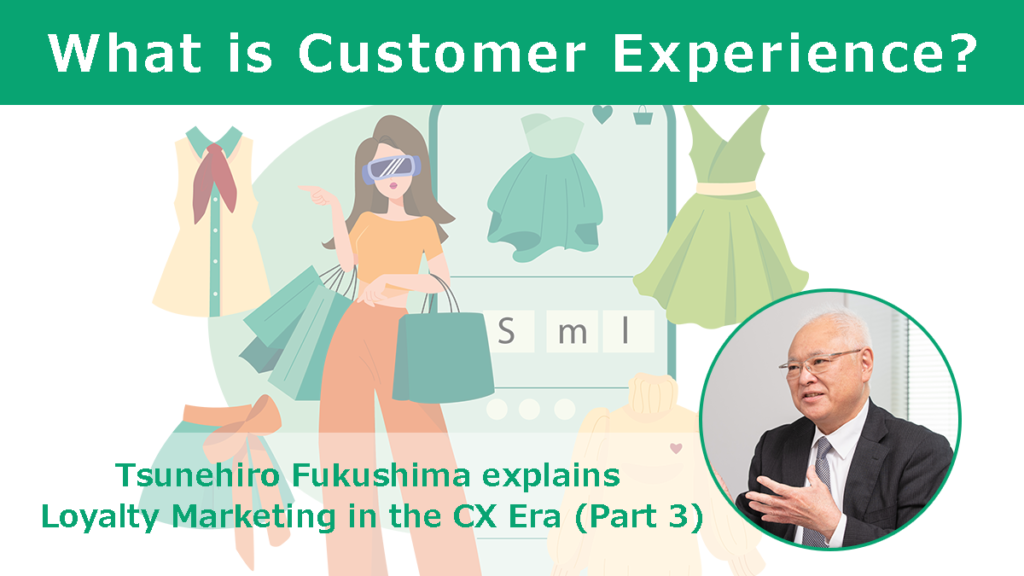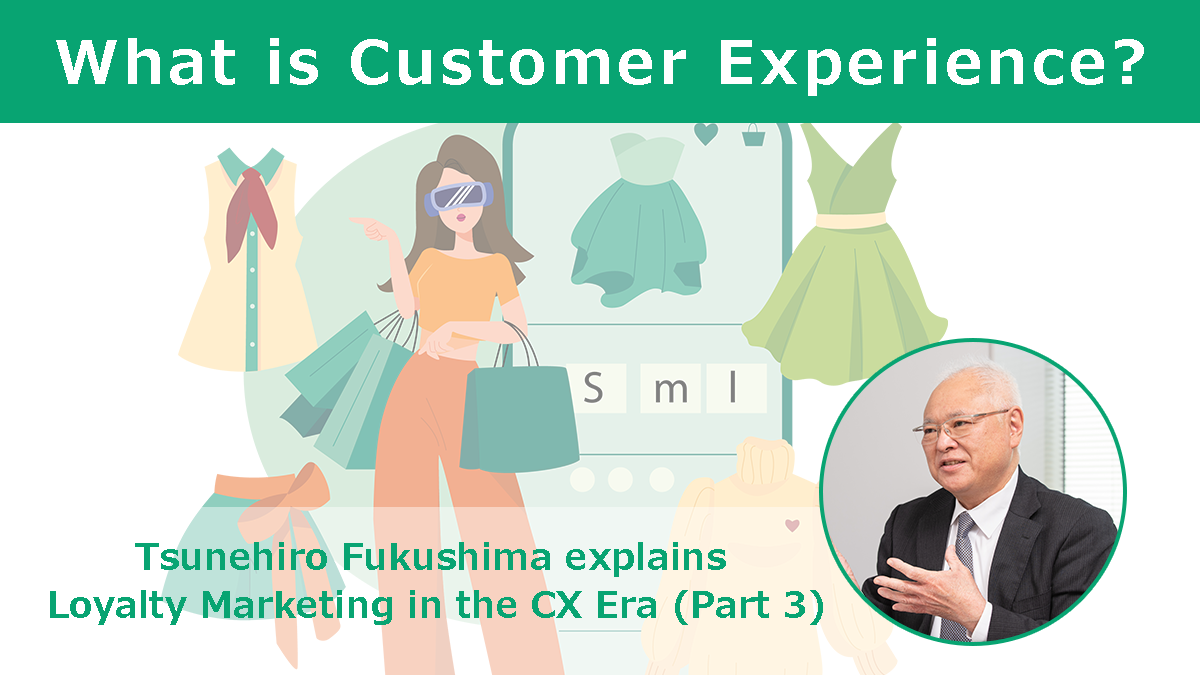What is CX (Customer Experience)? In order to be chosen by customers in the future of marketing, i.e., in the era of loyalty marketing, we need to focus on CX and aim to build a long-term relationship with our customers. With the improvement of Internet technology and the spread of smartphones, customers themselves are actively gathering and transmitting information through SNS (Social Network Service), blogs, word-of-mouth services, etc., and the points of contact between companies and products and customers have exploded. The amount of information each customer receives per day probably doubled or tripled what it used to be.

Contents
The explosive increase in the volume of information and a wide variety of customer contacts
This has had a major impact on marketing. When there was very little information available, customers acquired most of their information from the products themselves. Of course, television and magazine advertisements existed, but it was not uncommon in the 1980s, for example, that the number one route of recognition was on the product or the sales floor. However, nowadays, people are more likely to search for brands and products they are interested in on social networking sites before looking at them in stores. Or they look up what they see in stores on word-of-mouth websites. The relationship between brands and customers has thus become increasingly complex, as a wide variety of points of contact between the two have been created.
Loyalty is even more important in marketing
As Kotler wrote about this change in his trilogy after “Marketing 3.0,” customers are now forming recognitions and perceptions of a brand not only from CS (customer satisfaction), which is derived from encounters with products but also from CX (customer experience) through all points of contact. There are various points of contact, all of which involve the customer and the brand, and all of these events are reflected in the perception, or image, of the product, brand, company, etc. This will also lead to the evaluation of the product. For example, even if we take only one simple aspect of product purchasing behavior, it is important to understand that the background of such behavior reflects not only simple motives such as whether the product itself is good or bad but many other factors as well.
Customers are now chasing what they really like through CX, which consists of many points of contact. This will become loyalty. Loyalty means the quality of being loyal. Although the word may sound somewhat stiff, it is about trying to form a strong, positive long-term relationship with the product. In simple terms, it can be described as the state of liking or trusting a particular product, brand, or company.
Loyalty is of a completely different nature than simply being satisfied or unsatisfied with the product itself. When people become loyal, they will continue to support the brand or company on an axis other than whether the product itself is good or bad, and they will continue to buy the same product even if it becomes more or less expensive. Once loyalty is formed, it is not easily shaken, even if there are one or two instances of dissatisfaction with the product or service itself.
What is the difference between CS and CX?
For example, let’s say you have a favorite diner. Imagine a diner that is not an upscale restaurant, but you like the way they cook the egg. Suppose one day it was very crowded and the egg was undercooked. If considered as the meal of the day itself, it becomes a dissatisfaction. Let’s take this as an example of the difference between CS and CX. In terms of CS, or product satisfaction, the store failed to satisfy the customer, and that customer will not come back. But what if it is a customer who already likes and is attached to that store, i.e., loyalty has already been formed by the great CX? That customer will then keep coming back. Perhaps on their next visit, they may tell the waiter that they did not enjoy the food the last time. This is not a claim, but more akin to communication exchanged with a friend. This is loyalty.
CS occurs every time a product is consumed, but loyalty is not so easily formed. It can only be built if we can achieve valuable CX. Instead of taking time to build, once formed, it does not collapse easily. However, in the case of the diner, for example, if they serve an unappetizing dish five times in a row, the customer will naturally stop coming. This is called the extinction of loyalty.
In future marketing, it is necessary to place more emphasis on CX, not just CS. Satisfaction with the product itself is useful for generating short-term sales, but marketing from this perspective alone will not give you a competitive advantage in the future. Loyalty will lead to long-term sales, and profits because they will not demand discounts. While short-term sales may be necessary for some corporate activities, it is essential to take a longer-term view and focus on CX in the future of loyalty marketing. Let’s aim to build better and stronger relationships with your customers to increase loyalty.
Tsunehiro Fukushima will direct your marketing efforts
At transcosmos, we offer marketing strategy proposals in line with the 5A concept advocated by Philip Kotler. For actual proposals, Tsunehiro Fukushima, the commentator of this article, supports loyalty marketing optimized for the digital age. First of all, please tell us your company’s concerns.
Tsunehiro Fukushima
Corporate Executive Officer, transcosmos inc.
Director, Japan Marketing Association
After completing graduate studies at Tokyo Institute of Technology, he joined Ajinomoto Co., Inc. He then worked for GE Capital, Mitsubishi Corporation, Gurunavi, Inc., and Medical Data Vision Co., Ltd., where he served as head of big data business and marketing. His areas of expertise include new business and new product development, brand theory, medical business, and loyalty marketing. At transcosmos, he is in charge of marketing-related business development and is the exclusive provider in Japan of the 5A diagnosis introduced in the book “Kotler’s Marketing 4.0”.

